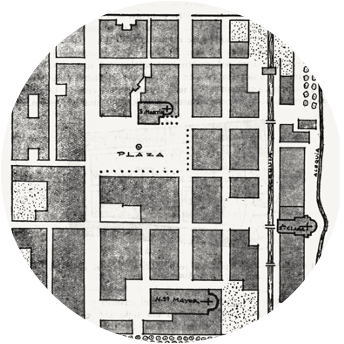
Roots of Global Hispanic Urbanism: Spaces of Conflict and Cultural Exchange during the Reconquista and its Aftermath
Lectures (6)
Loading Accordion Items...The Overview
This module is a survey of pre-modern and early modern cities and architectures in territories con-quered or in conflict with Spanish kingdoms, including, Al-Andalus, Castile, Aragón, Balear Islands, Canary Islands, north Morocco, Italy, Sicily, Malta, among others. The module focuses on their con-nection with Global Islamic Culture, Jewish presences and diasporas, and their influence on American Spanish urbanism. This proposal has been designed as a continuation of the GAHTC module “Architectural links between the Islamic World and Latin America” by Professor Fernando Mar-tínez Nespral, especially of its first lecture "Arabic component of Ibero-American culture.” The module also establishes links with other GAHTC modules and lectures on Medieval Mediterranean and Global Islamic Architecture.
The proposed module expands on the Reconquista and its global connections, going from the Arab medinas of the Iberic Peninsula to the firsts Spanish grid foundations in the XI century, Aragon’s and Castile’s island cities, the War of Granada, the occupation and transformation of Granada’s realm by Castilian conquerors, the transformation of Jewish neighborhoods – juderías - before and after their expulsion in 1492, the convivence with surrendered Nasrids during the XVI century, and the cities founded by migrant Nasrids in north Morocco.
The sites depicted in the module show the dynamic frontier situation that characterizes the Recon-quista, a context where new architectonic and urban practices were born from a complex network of relationships and confrontations. The four Lectures of the module show examples and discourses that defy Euro-centric categories, questioning the canonical division between medieval and modern periods and proposing a more diverse landscape of hybrid models and dynamic experiments.
The selection of cities and architectures for this module includes Cordoba’s Great Mosque, Madinat al-Zahra, medieval juderías, Jaca, Castellon, Valencia, Seville, San Cristóbal de la Laguna, Granada and the Alhambra, Santa Fe de Granada, Tetouan, and Chez Xauen, among others.


